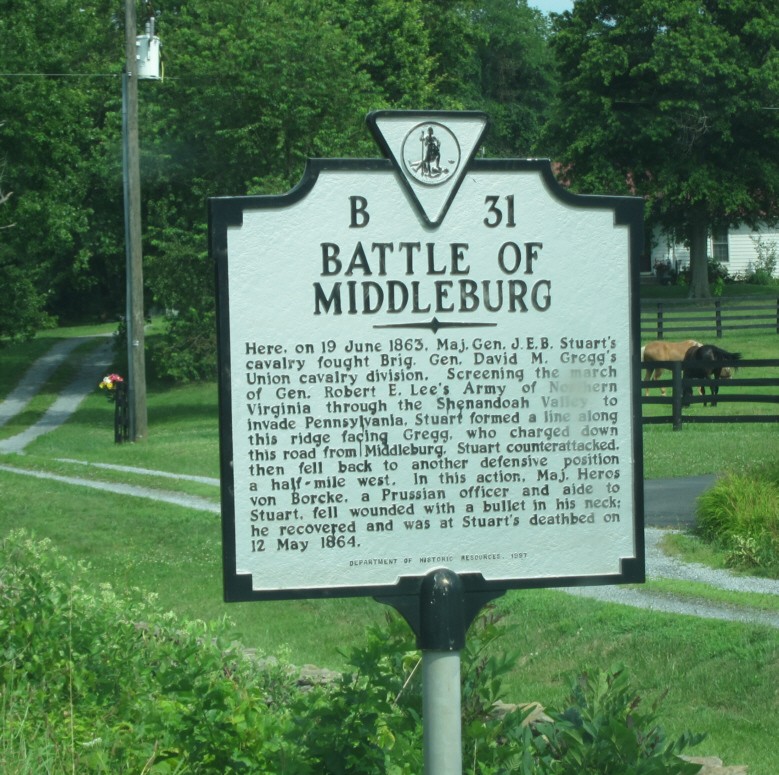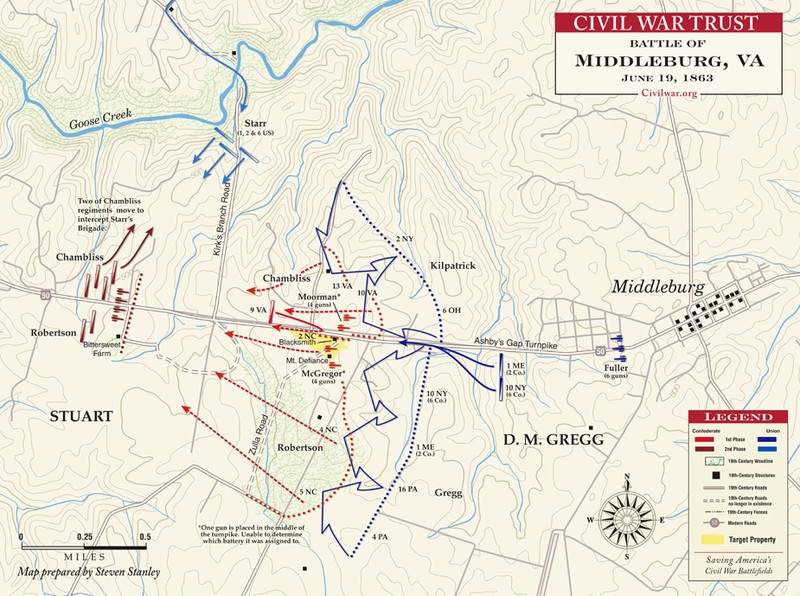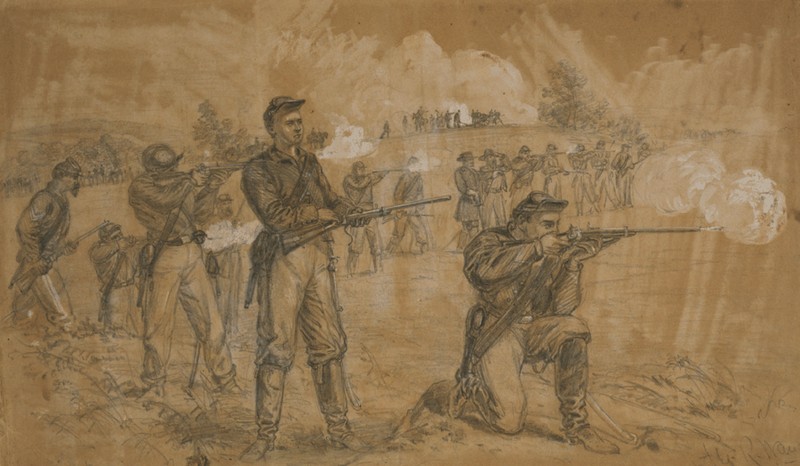The Battle of Middleburg
Introduction
Text-to-speech Audio
Images
Historical marker for the battle

Map detailing troop movements during the Battle of Middleburg

Sketch of Union troops during the battle

Backstory and Context
Text-to-speech Audio
Colonel Alfred Duffle, a French-born officer, led his 280 men from the 1st Rhode Island Cavalry westward from their camp in Centerville on June 17th. As he traveled west with his men, he would easily take small Confederate defenses he encountered. Major General J.E.B. Stuart established a headquarters in Middleburg, Virginia and separated his brigades to look out for enemy troop activity. Soon they spotted the 1st Rhode Island Calvary led by Colonel Alfred N. Duffié camping near where the Confederates were situated. Despite seeing the small number Union troops were unescorted, the Confederates chose to not attack the unit, in fear that the unit was the precursor to a much larger force.
Duffié finally encountered Confederate troops when his unit arrived in Middleburg, interrupting an "evening of socializing" between Stuart and some local women. Stuart and his staff immediately retreated to Rector's Crossroads, where his nearest brigade was. Stuart dispatched troops to crush the Union troops but found that Duffié had already stationed his troops behind stone walls. But all this did was delay the routing of the Rhode Island Cavalry, and by the next morning, most of Duffié's men were captured by the Confederates, though Duffié himself and some men were able to safely retreat back to Centreville, where the Army of the Potomac was located. After the battle, Union losses were reported as 16 killed, 46 wounded and 37 missing. Stuart lost around 40 men, including his Chief of Staff Heros von Borcke.
Sources
“Battle Summary: Middleburg, VA.” National Parks Service, U.S. Department of the Interior, www.nps.gov/abpp/battles/va037.htm.
“Middleburg.” Civil War Trust, Civil War Trust, www.civilwar.org/learn/civil-war/battles/middleburg.
